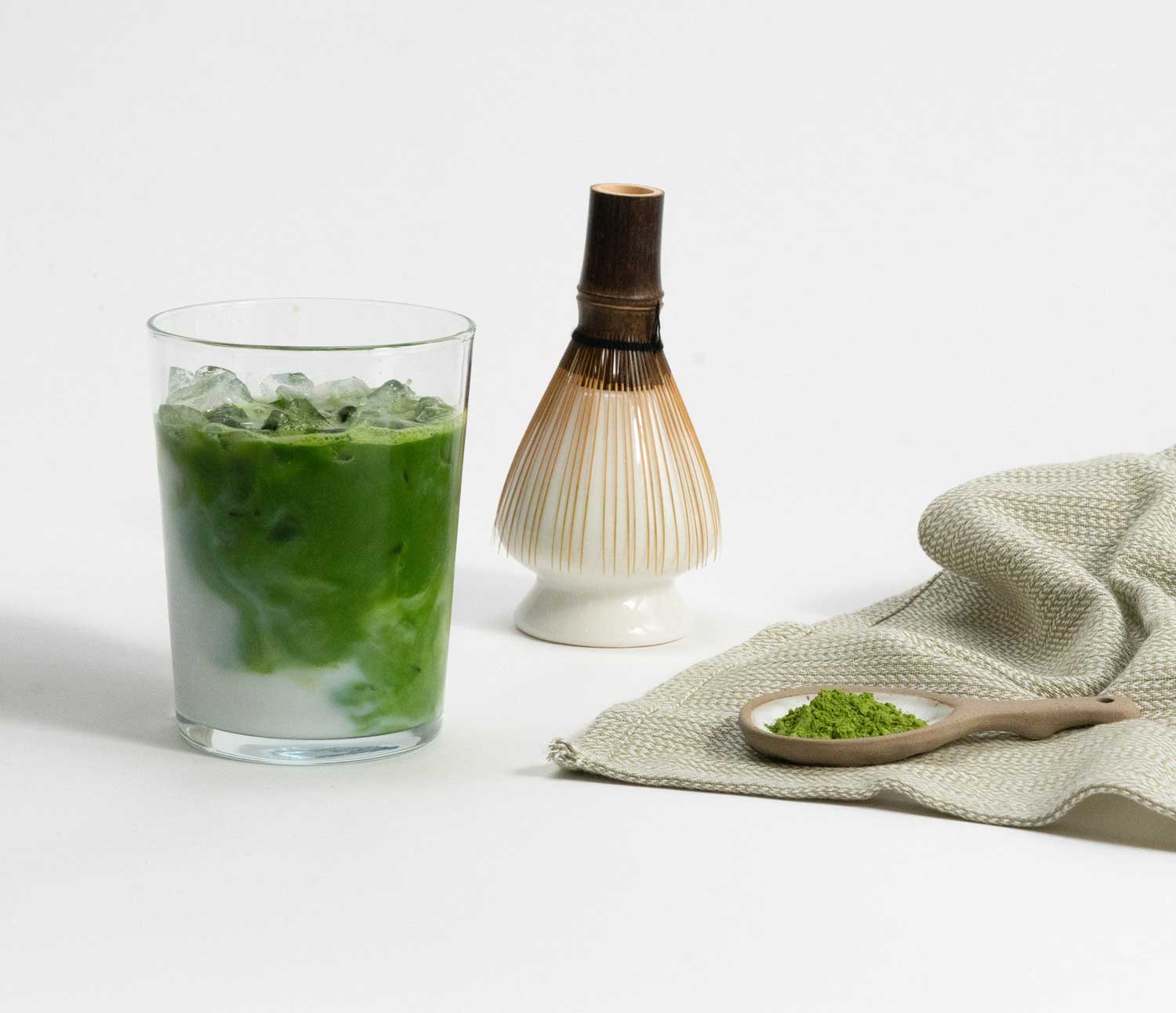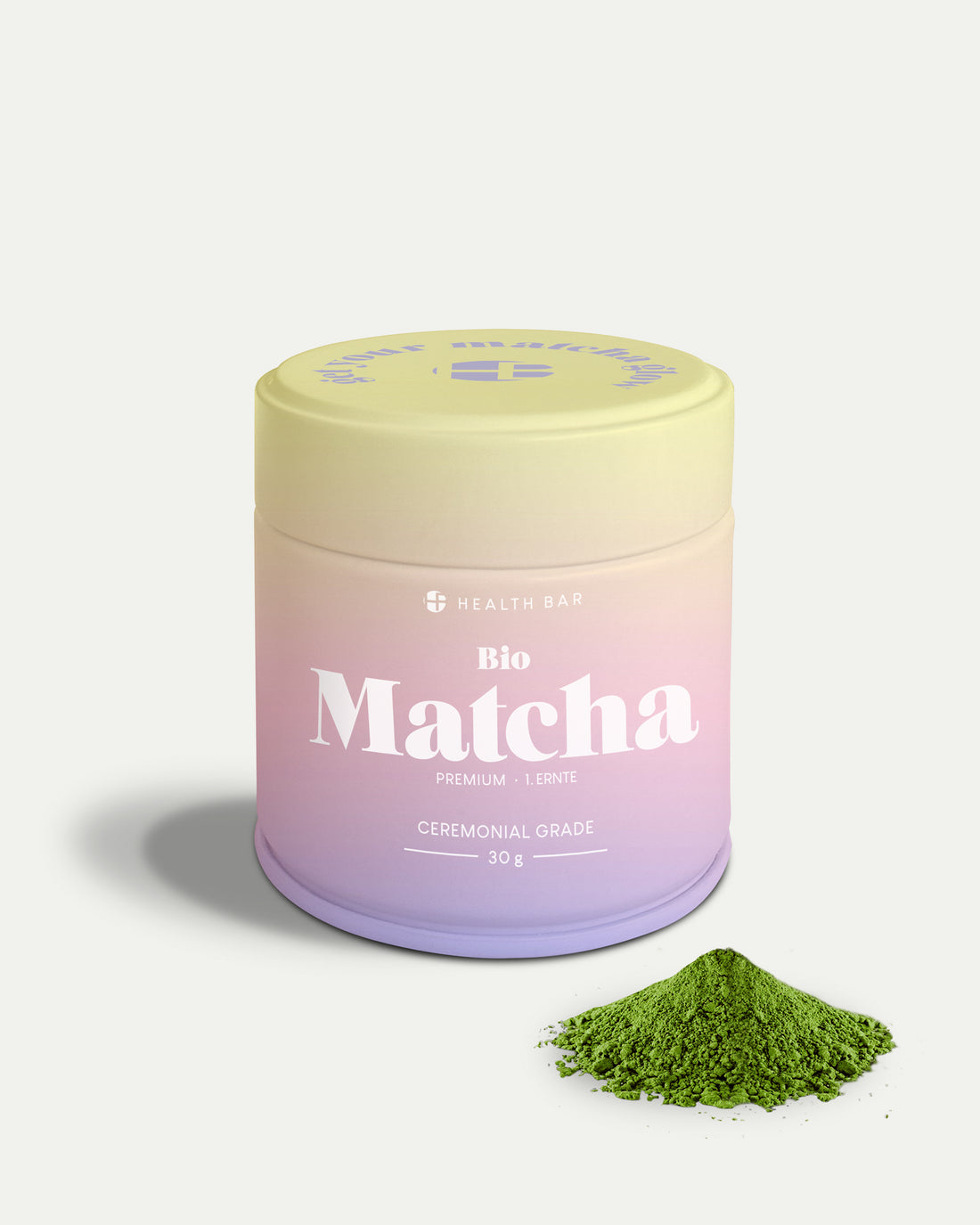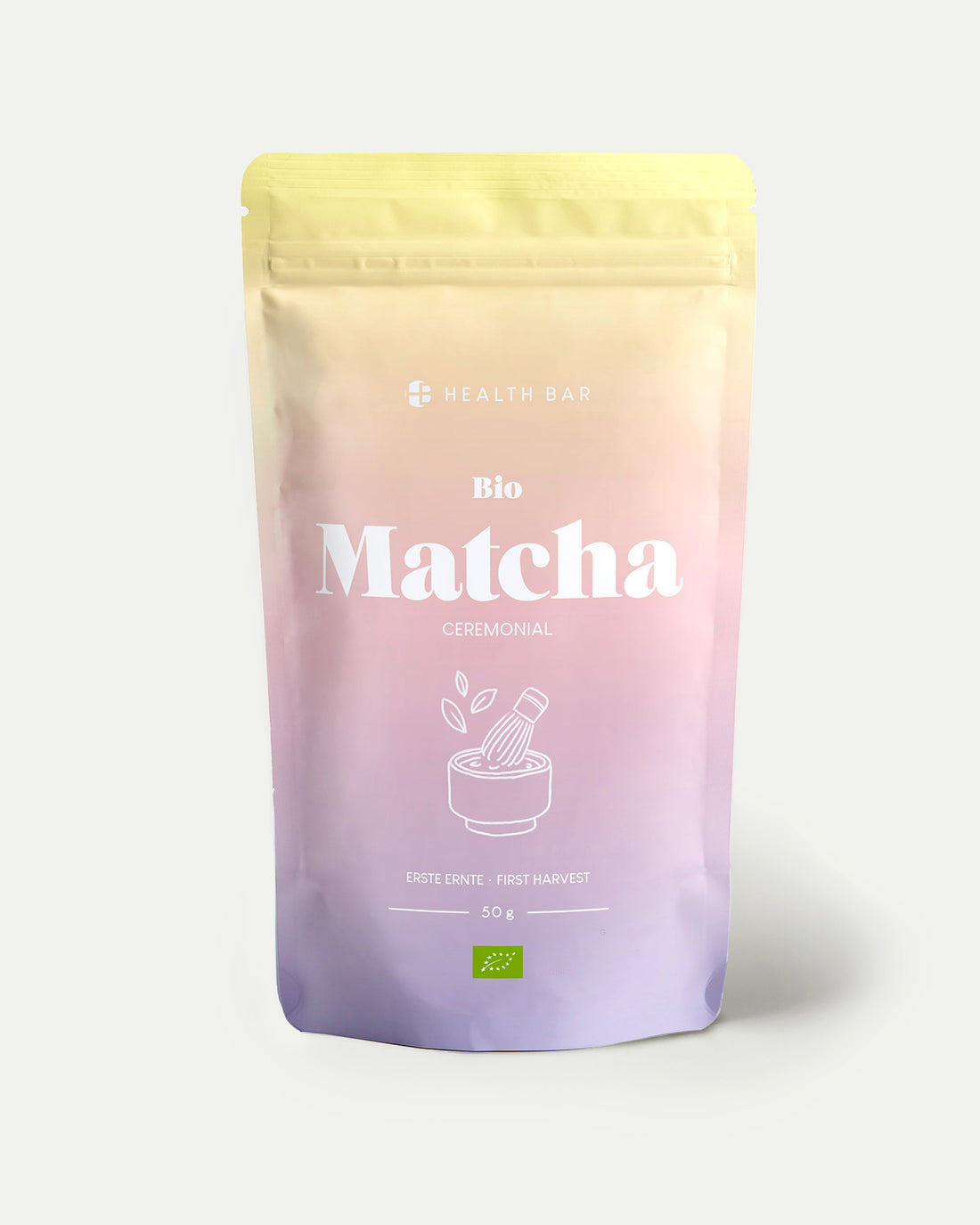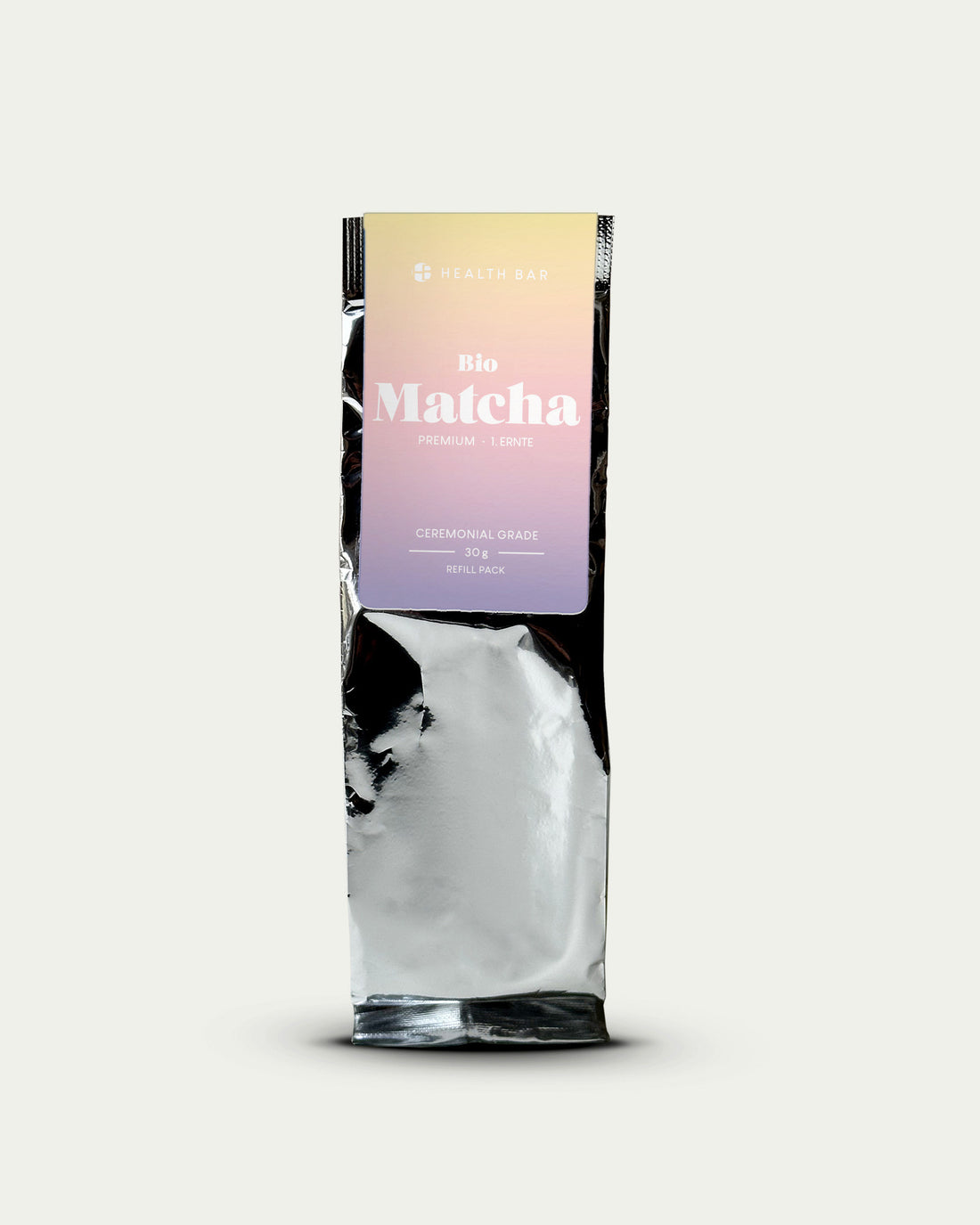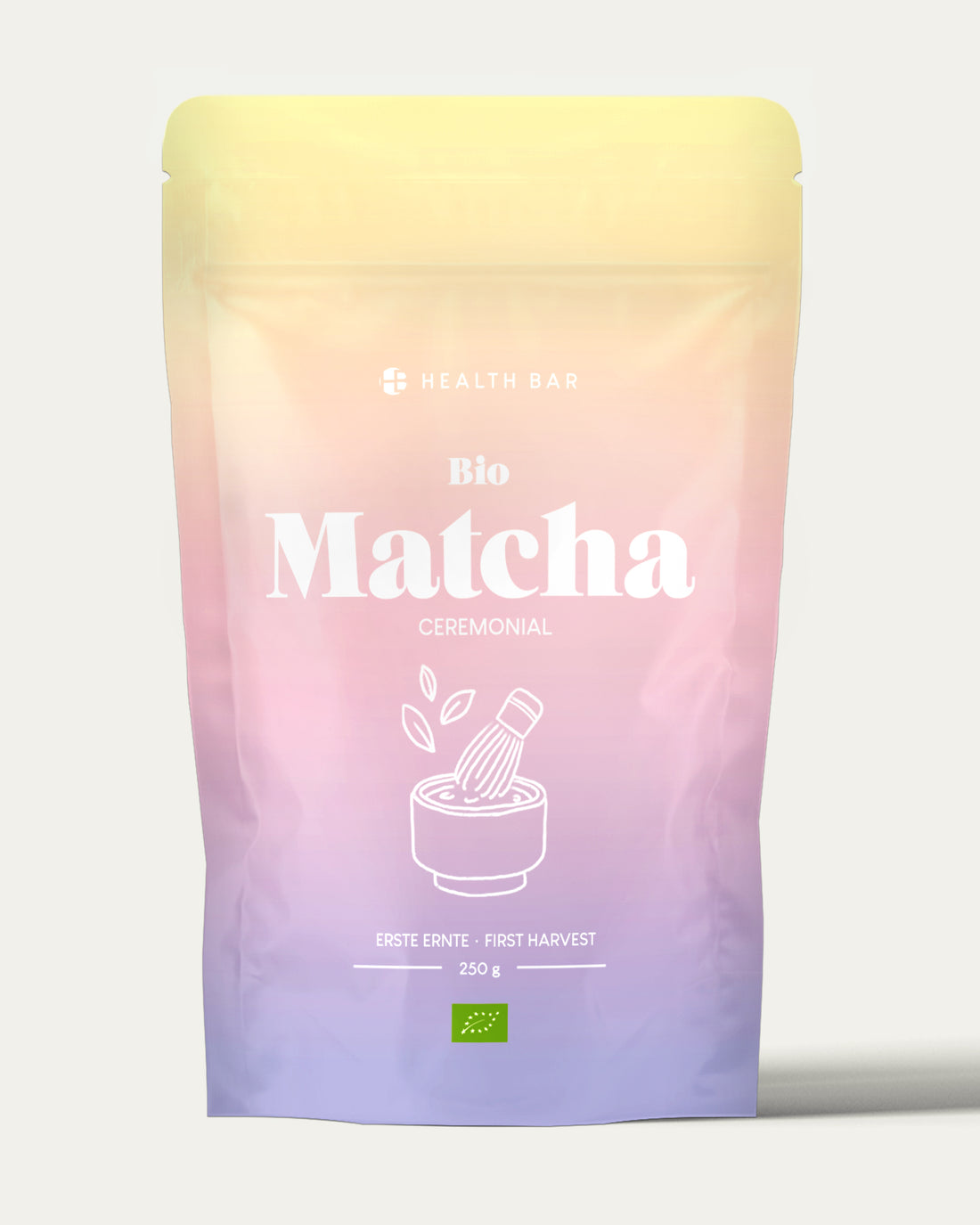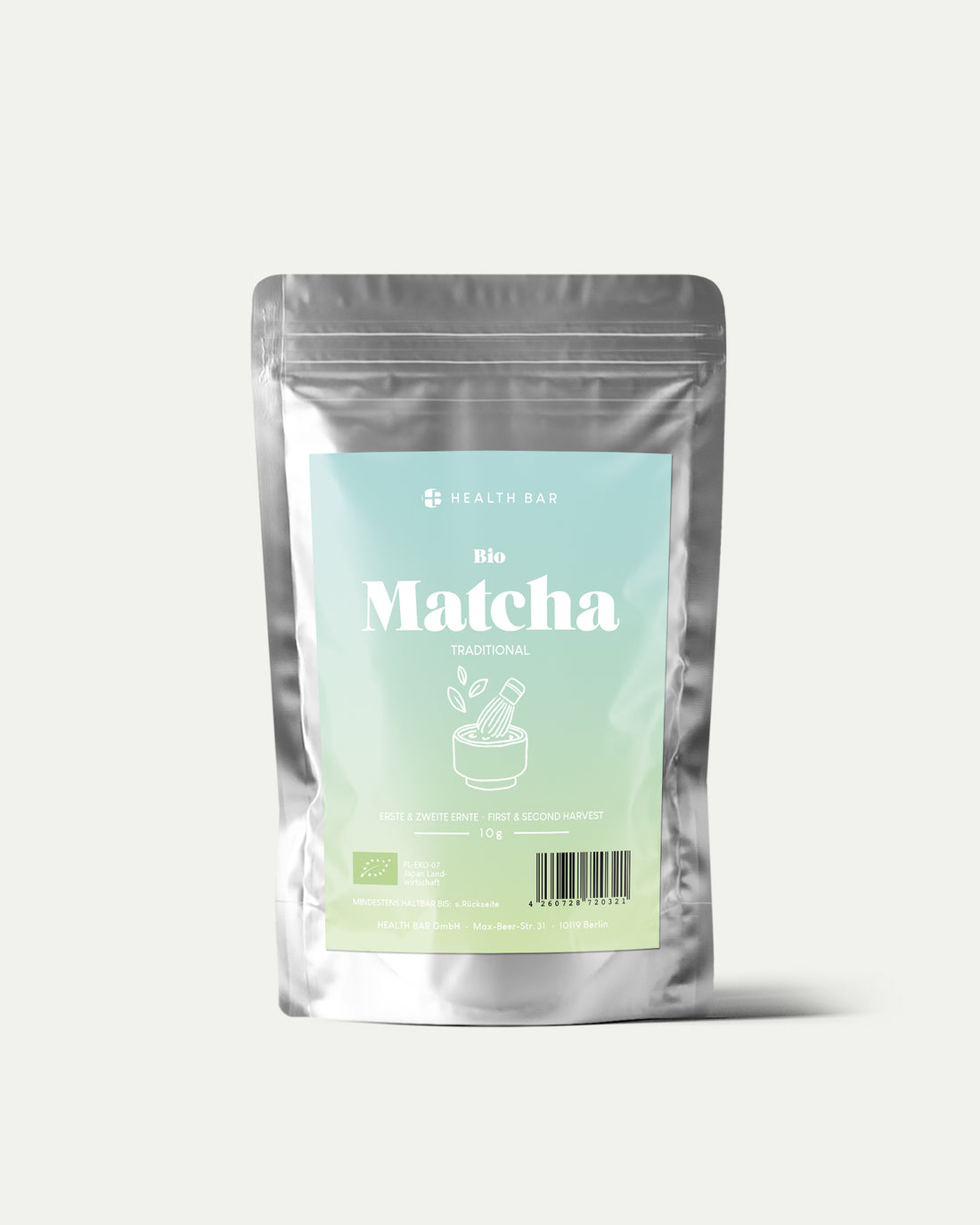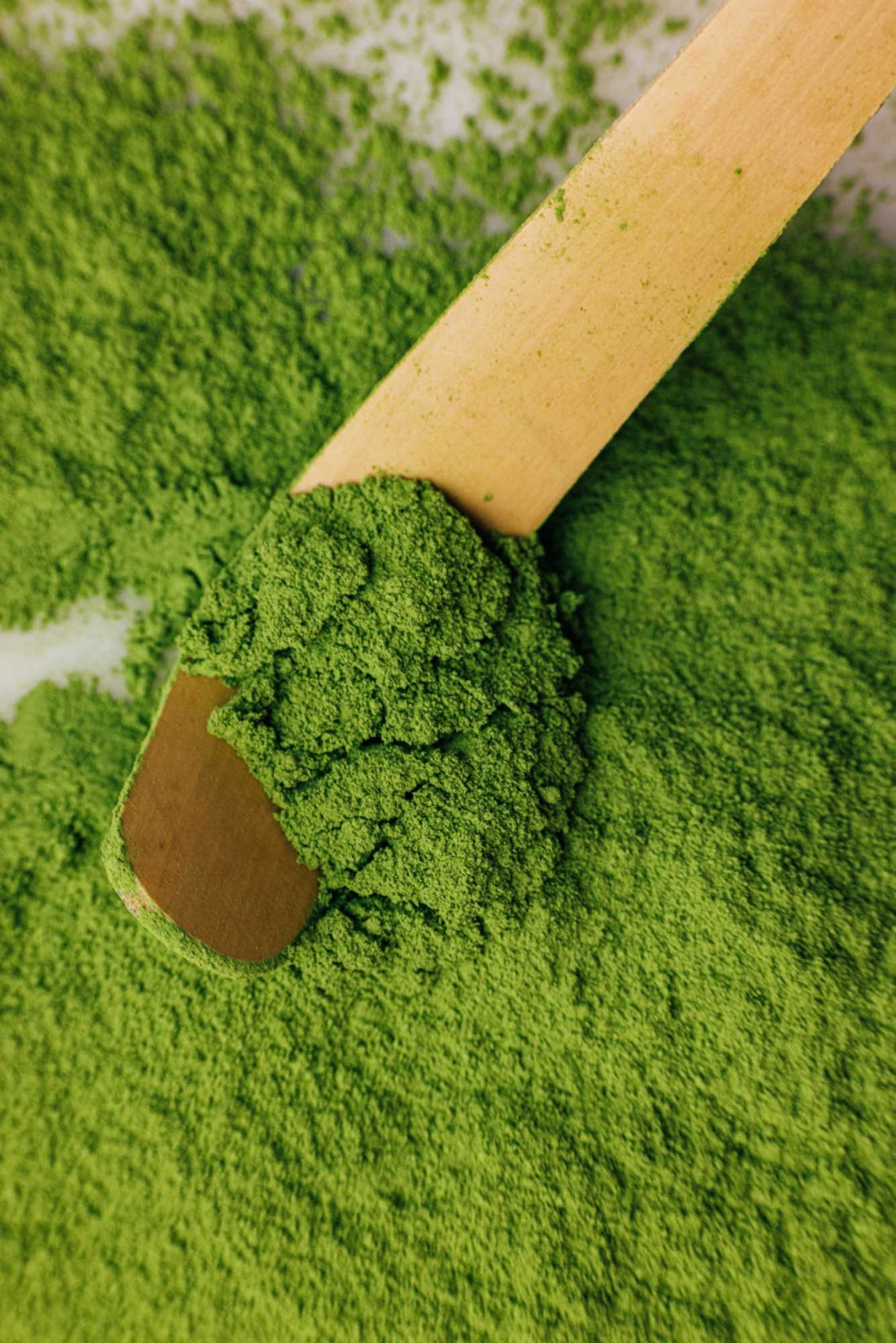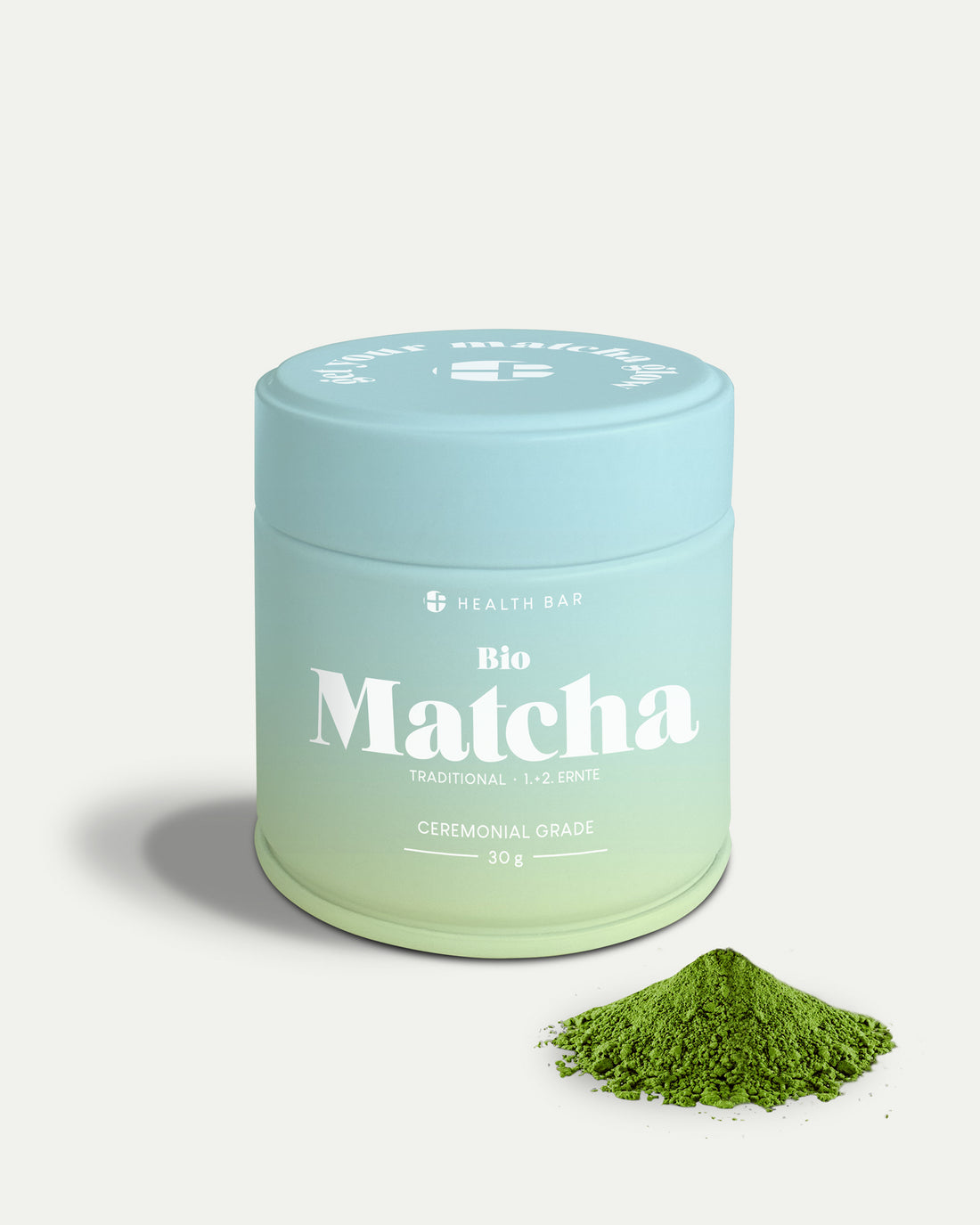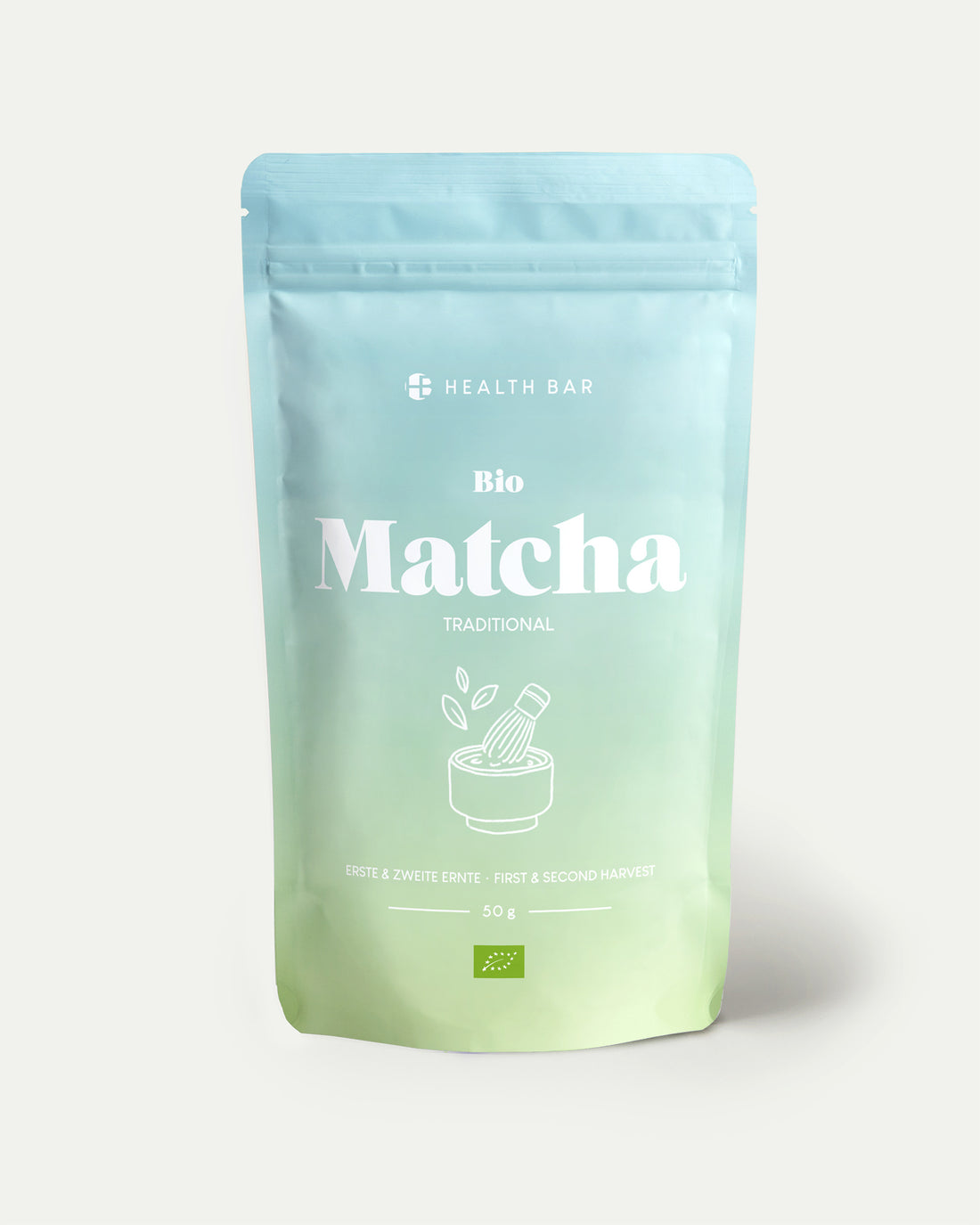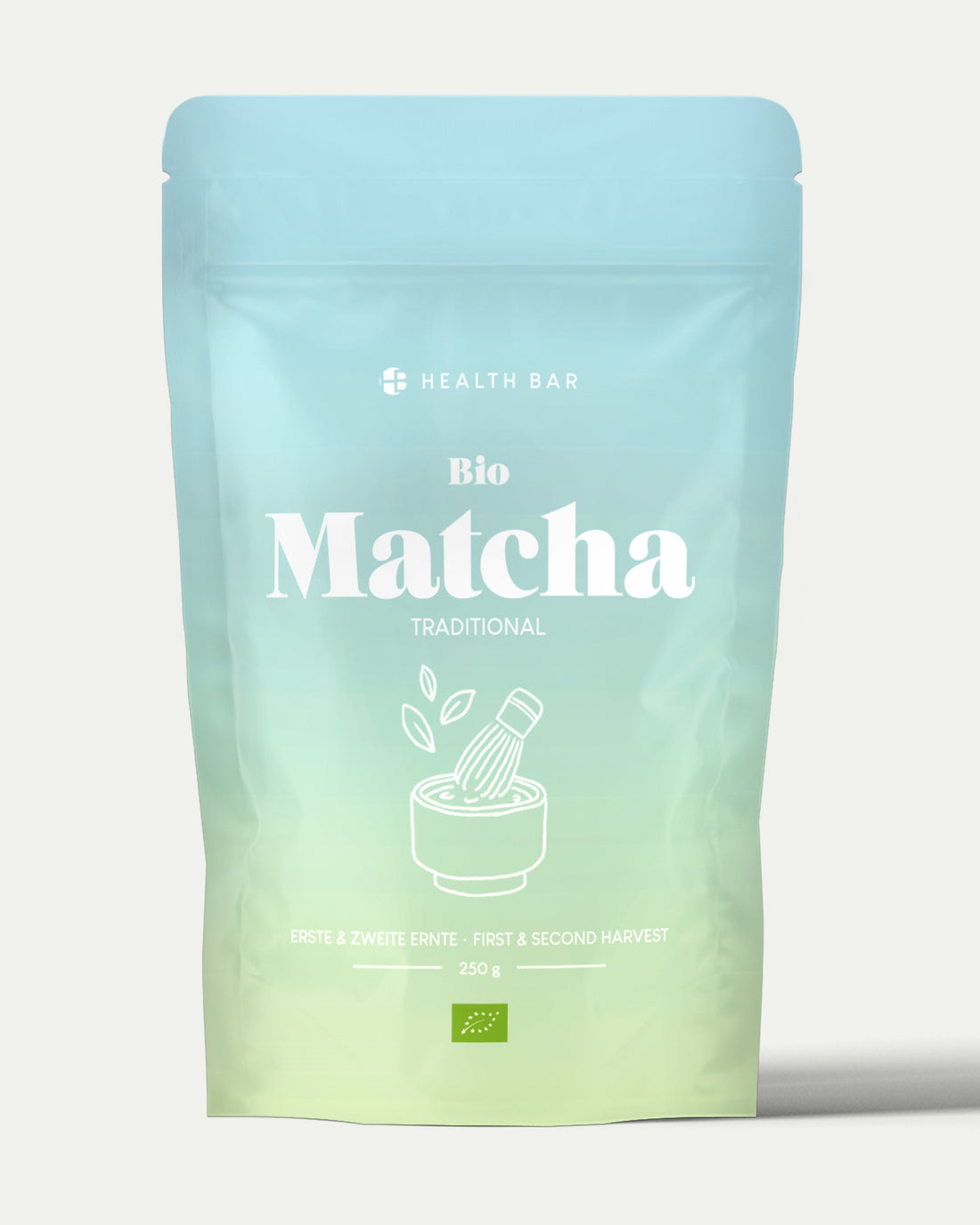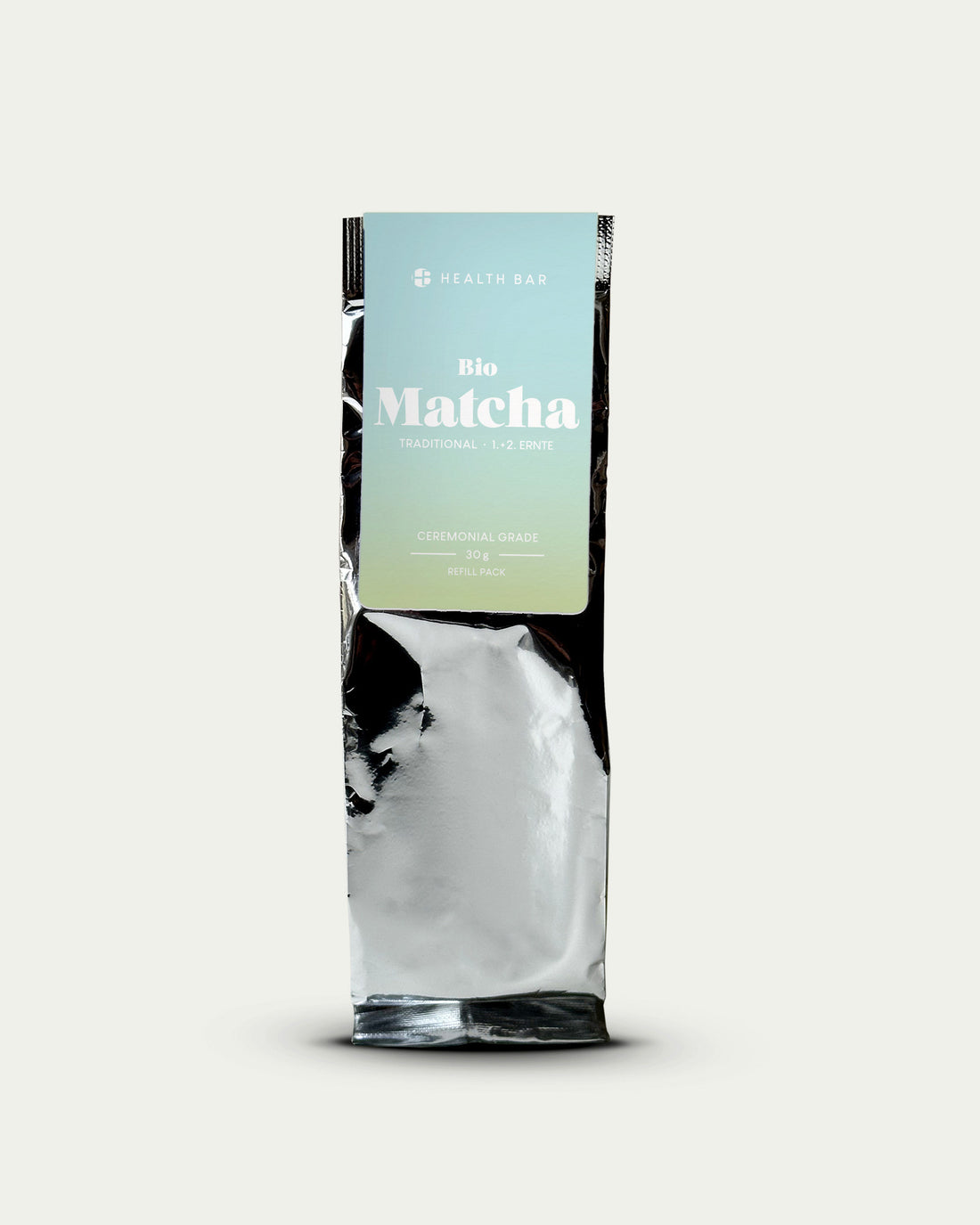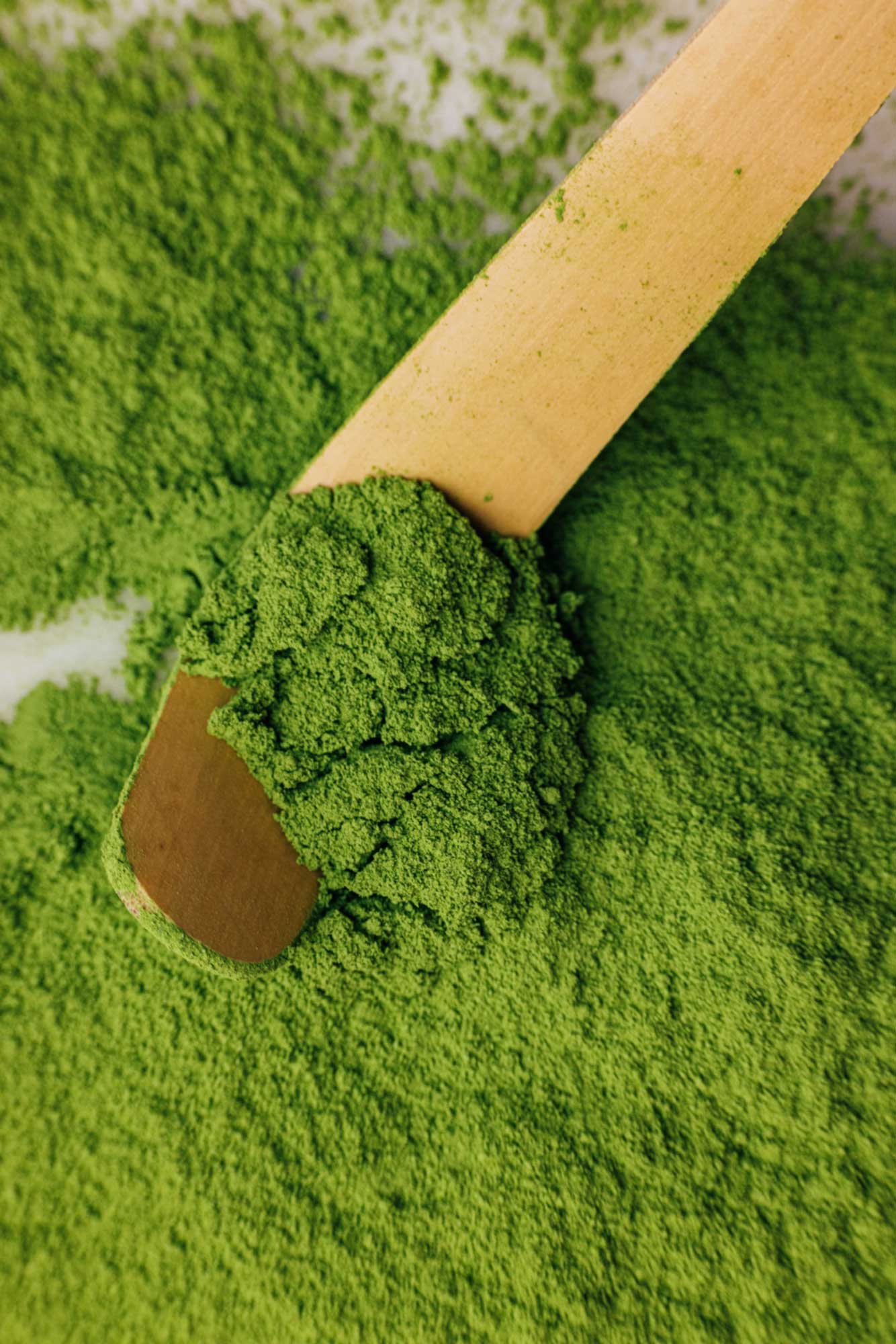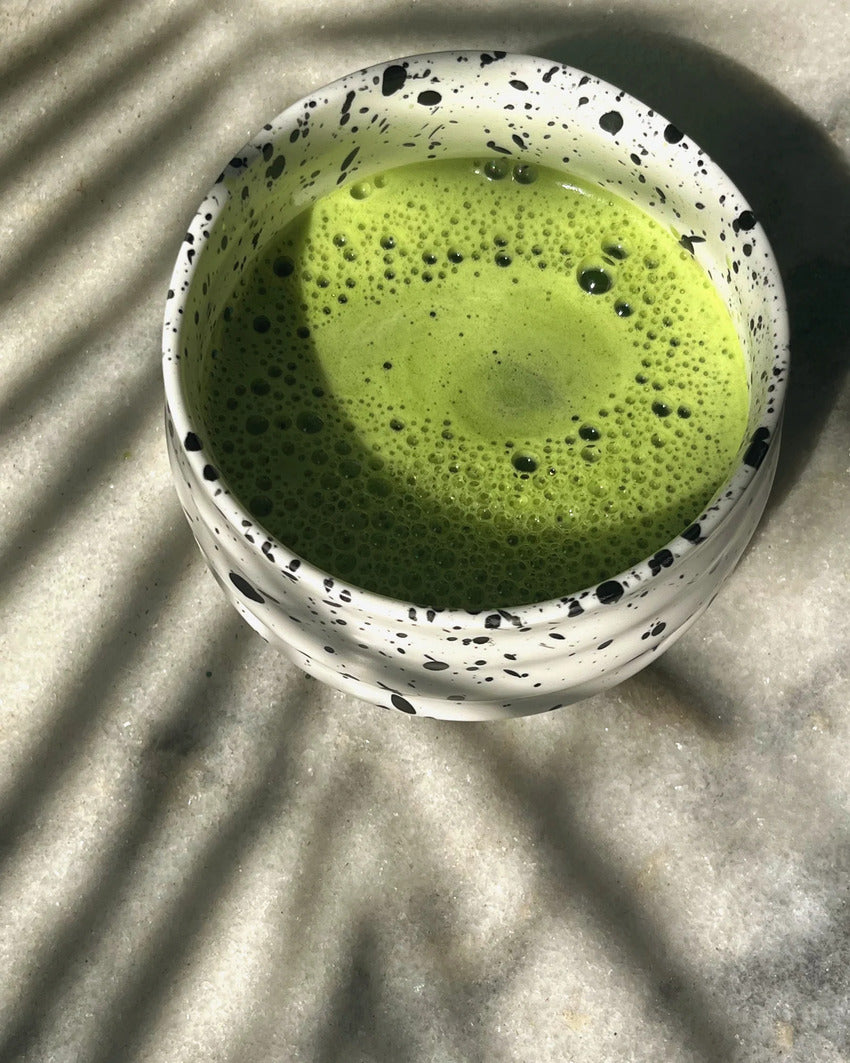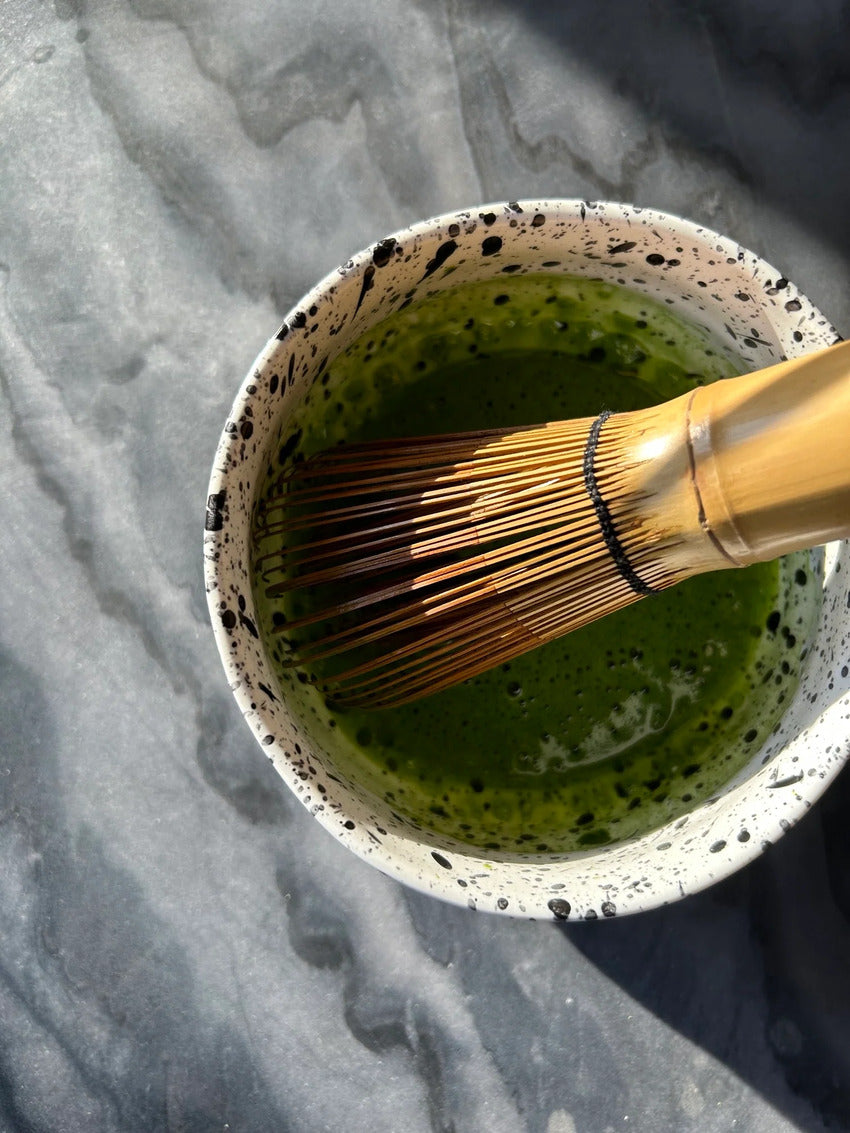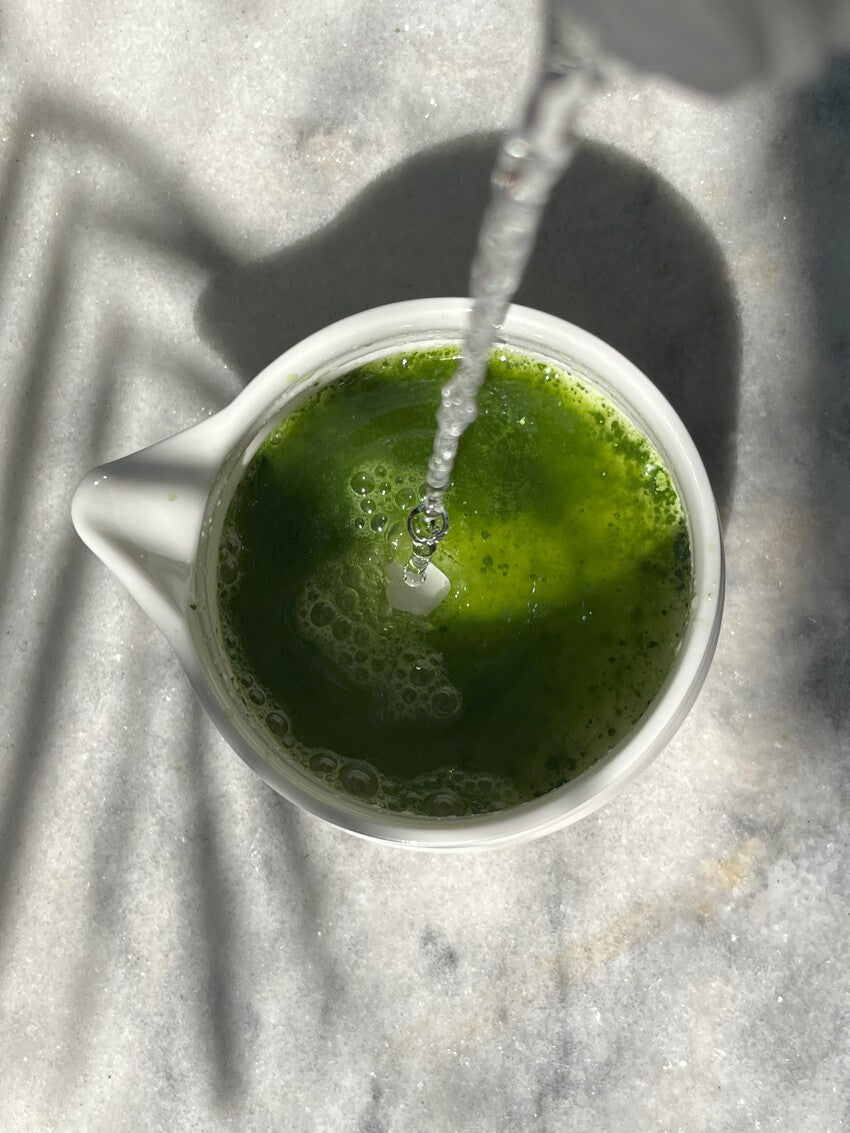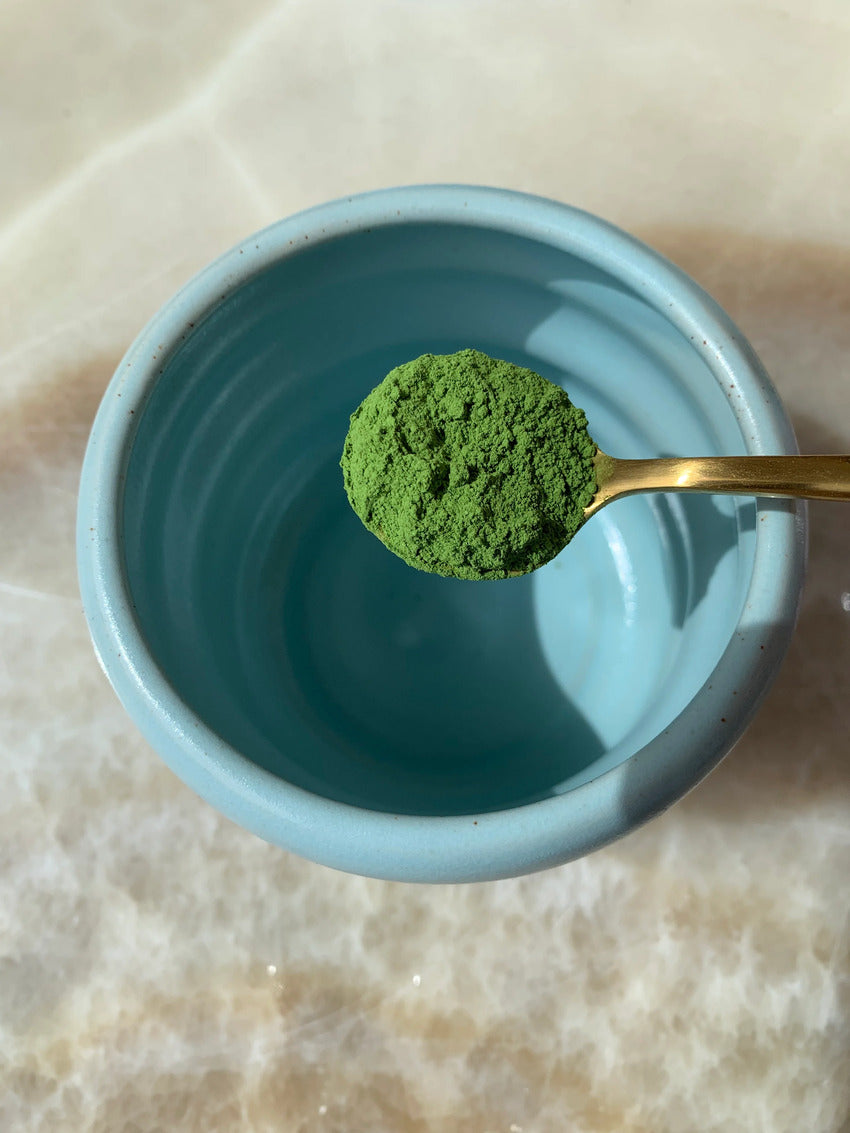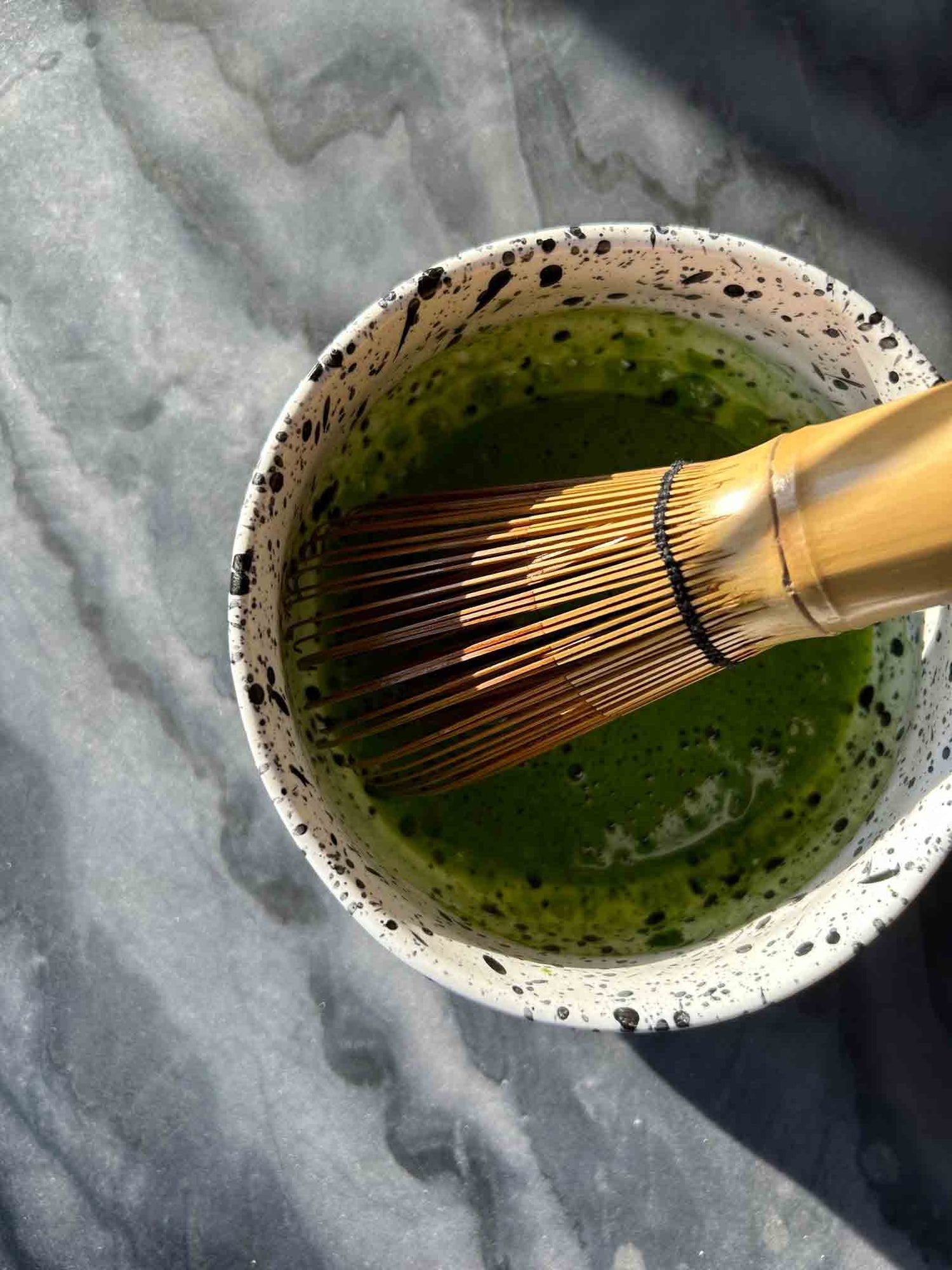Our Ceremonial Matcha contains 60 mg of caffeine per gram.
Our Traditional Matcha contains 50 mg of caffeine per gram
Ceremonial Matcha typically contains **30 to 70 milligrams of caffeine per 2 gram serving** (about one teaspoon), which corresponds to a normal amount used to prepare a traditional bowl of Matcha.
Compared to other caffeinated beverages, Matcha generally contains less caffeine than a cup of coffee, which on average contains about **95 milligrams of caffeine**. However, the caffeine in Matcha is balanced by the high content of **L-Theanine**, an amino acid that has a calming effect and helps make the caffeine boost smoother and longer-lasting. Thus, the caffeine kick from Matcha often feels "calmer" and less hectic, making it a popular choice for people looking for a stable energy boost without the typical side effects of coffee such as nervousness or trembling.
Matcha therefore not only provides an immediate energy boost but also promotes longer-lasting concentration and attention.
